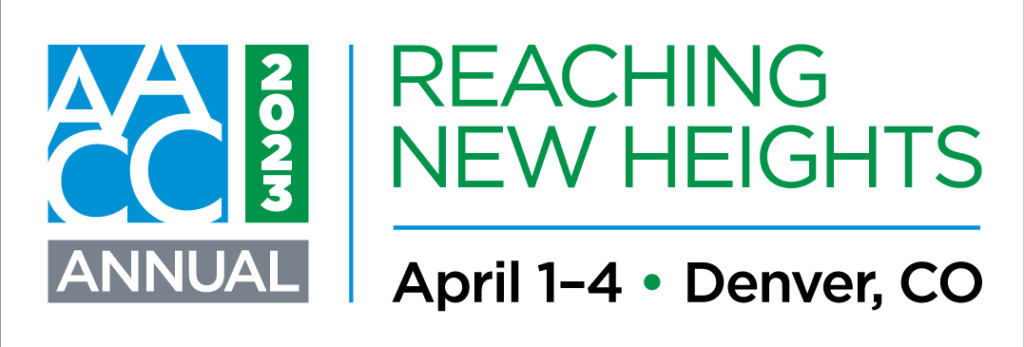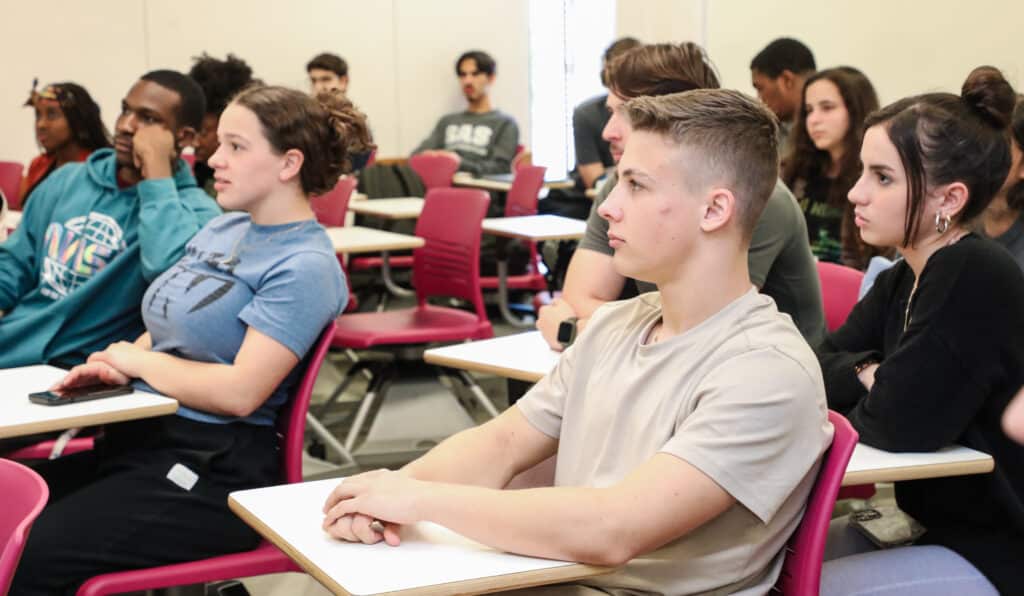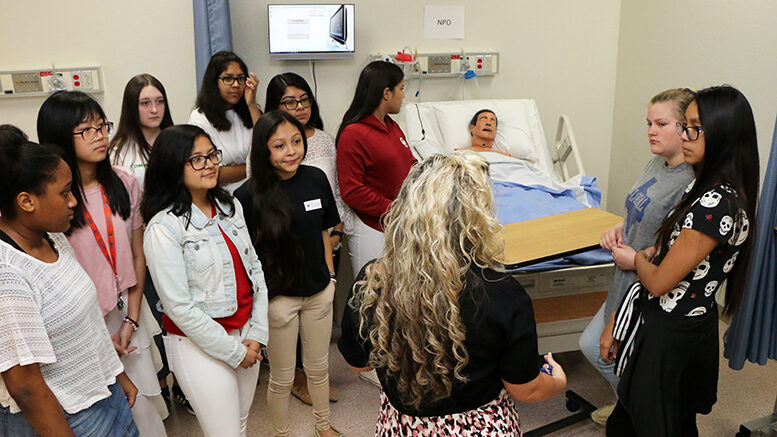Schools, districts or states fund 78% of dual-enrollment programs in the U.S., according to a recent survey by the U.S. Education Department. The student or their families help foot the bill in 42% of the programs, and alternate sources fund 10% of them. Many programs receive funding from two or more of these sources.

The number of dual-enrollment students is increasing despite declining overall community college enrollment. Community colleges receiving significant funding from their state government or other sources thrive on these rising enrollment numbers. Others with less generous or even no state funding are breaking even or falling behind.
The 2023 AACC Annual will include several sessions on dual enrollment (Search “dual enrollment” for a list of them). Interviewees in this article are among the speakers at those sessions. Register today for the convention.
Community College Daily spoke with community college leaders in Texas, Florida and South Carolina and a researcher at the Community College Research Center (CCRC) to find out more about who pays for their programs.
Mutual benefits
CCRC researcher John Fink is examining “dual-enrollment equity pathways” (DEEP) models in Texas, Ohio and Florida. Funding, he says, is “all over the board.” He noted that even within states, there is a lot of funding variation.
He has also seen cases where the short-term loss of revenue from subsidizing dual-enrollment programs can be workable in the long term because it draws students into the college who wouldn’t otherwise continue their education.
“If community colleges invest in advising, supports and outreach, they can retain dual-enrollment students at higher rates,” Fink said. “There’s some upfront investment in this approach, but we’re also learning that this can balance out in the long run economically for colleges.”
Fink’s research on the economics of dual enrollment suggests that it can benefit both high school students and community colleges.
“Community colleges have to make some upfront investments because if you’re taking students who need to adjust to college level, that takes some support,” he said. “But we’re hearing from these leaders that upfront investments pay off for the student and the college.”
The impact of a new funding model
Texas does not provide direct funding for dual-enrollment programs. But it does fund community colleges based on the total number of contact hours provided to dual-credit students, as it does for all students.
School districts also pick up some of the cost, but “it varies from district to district,” said Laurel Williamson, deputy chancellor and college president at San Jacinto College. “It’s their decision about how they want to pay. And in some districts, the parents pay.”

Texas’ funding model is changing next year so that state reimbursement will be outcomes-based for all students.
“Once the outcomes-based funding model comes into play, it will be fine,” Williamson said. “We have focused on student performance metrics and completion for the last several years, and the state already based a percentage of community college funding on performance metrics. So, we’re just going to 100% of that for most colleges.”
The impact of this new funding model on Paris Junior College (PJC) does concern Pam Anglin, president of the college. PJC is in a rural area, where dual enrollment is high because it is a cost-saving strategy for high schools. Fifty percent of the college’s students are dual enrollment, in contrast to only 21% at San Jacinto College.
Anglin expects the percentage of dual-enrollment students to rise above 50%. This increase will result from Texas lowering the age for students to enroll in dual enrollment. Thus, first- and second-year students can now take advantage of the programs. These younger students may have a more challenging time meeting the new outcome requirements.
An improved cost-sharing system
In South Carolina, the state pays lottery tuition assistance to students who take six or more credits in a semester. In Greenville County, the Greenville County School district also pays some tuition to Greenville Technical College (GTC). The district buys books and inclusive access materials for dual-enrollment students. The college offers students a discount on tuition, which affects its bottom line.
GTC looked for a better way to cost-share with the local school district and a dozen charter school partners, so it launched a year-long Lean Six Sigma project. The project resulted in an agreement with Greenville County Schools to streamline billing from the college to the parents. First, the college ceased to collect tuition payments from dual-enrollment students. Then the organizations agreed that GTC could send one bill to the school district, listing every student.
“We wanted to take a fresh approach to the problem and see if the two institutions together could share the total cost of dual enrollment,” said Larry Miller, vice president of learning and workforce development at GTC. “A single bill is much easier to prepare and much easier for the district to audit and pay.”
So, for now, GTC is secure in its funding. The college renews the agreement with the school district annually, and both are committed to continuing it.
Besides the billing arrangement, Miller attributes other successes to the Lean Six Sigma project. Dual enrollment has increased by 40%, and more than 500 students have enrolled in the first year following this initiative. The college also increased the number of credentials awarded to dual-enrolled students by 89%. And with a larger share of students identifying as Black/African American or Hispanic, diversity has increased.
Helpful rules and regulations
Florida’s dual-enrollment program continues to serve public and private schools and students receiving home school education. In 2022, the state established the Dual Enrollment Scholarship Program, allowing community colleges to seek reimbursement for tuition and instructional materials offered through dual enrollment.
“Historically, Miami Dade College (MDC) would receive tuition reimbursement from public and private schools during the fall and spring semesters. However, the college would absorb costs associated with summer enrollment as well as students attending home school education,” said Philip Giarraffa, MDC’s executive director of articulation and academic pathways.

Regardless of funding, Giarraffa looks forward to increasing numbers for dual enrollment. He attributes the continuing rise to his college’s strong partnerships with its secondary school partners. MDC is within the fourth largest school district in the country, with multiple campuses across Miami-Dade County, so the number of dual-enrollment students is significant. And, he says, “We’re poised to increase dual-enrollment numbers based on some of the initiatives we’re rolling out soon.”
Giarraffa hopes to leverage growing numbers of dual-enrollment students into a significant increase in high school graduates enrolling at MDC.
“There’s a great opportunity to work with those students and convert them into some of your degree programs after they graduate high school,” he said. “To me, that’s looking at the full picture.”
Solutions can be tenuous
Most community colleges have found ways to ensure an ongoing funding source for dual-enrollment programs. However, Miller cautions that there’s no guarantee that any solution will last forever.
“We reside within a state, and we’re a state agency, and so is the school district,” he said. “So, policy changes at the state level could disrupt our agreement with the school district. And that’s something we always must be ready to adapt to.”

